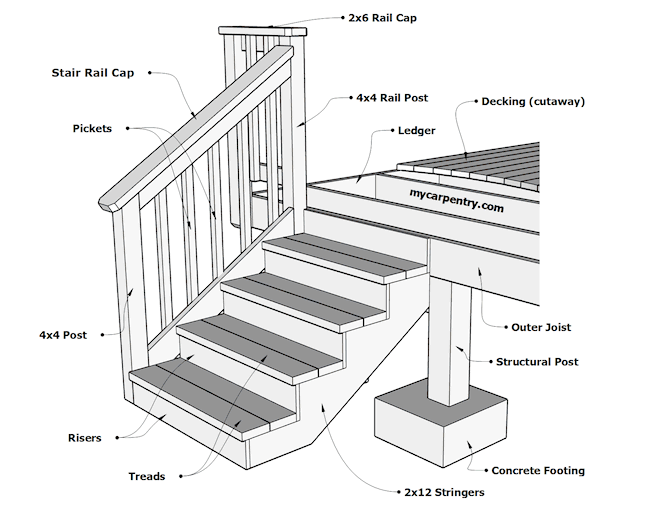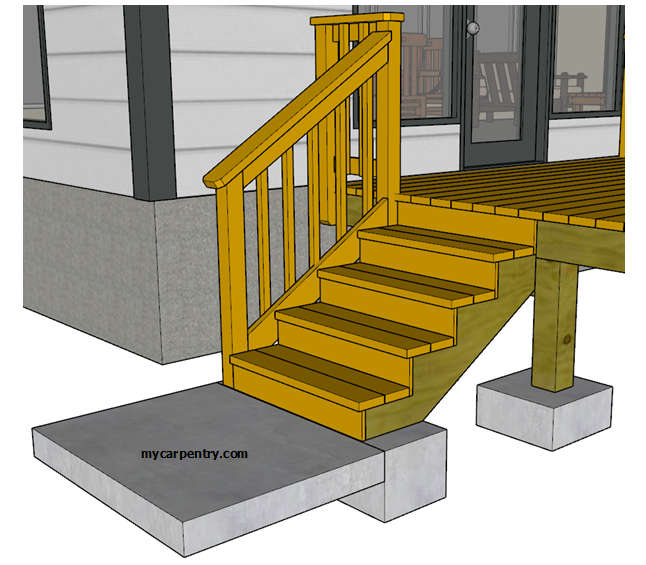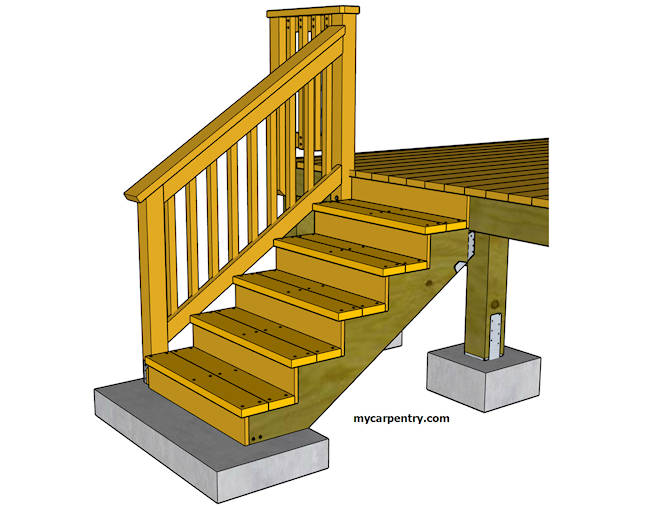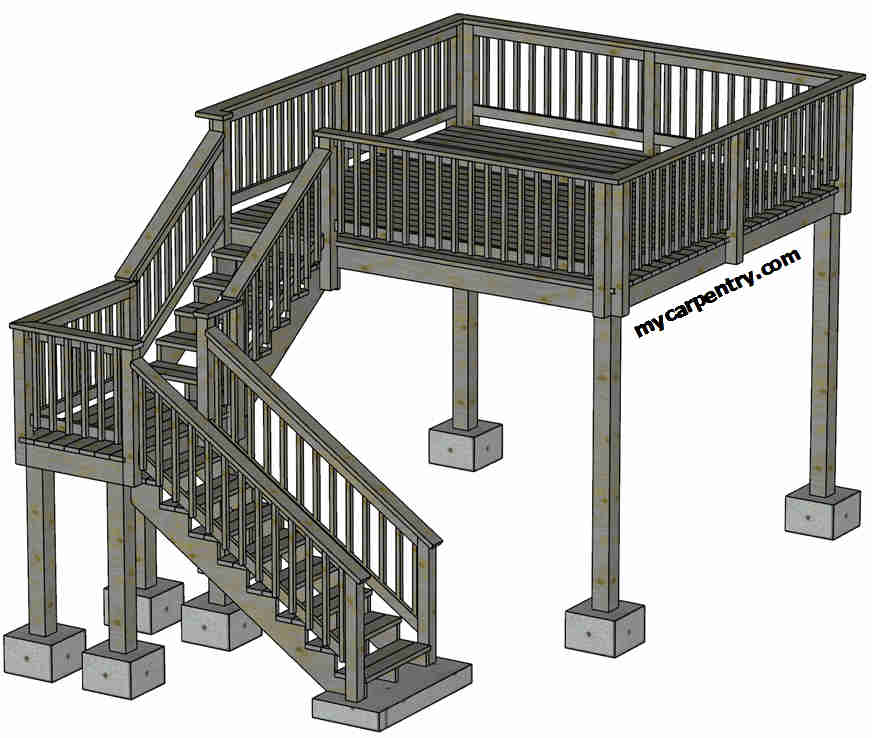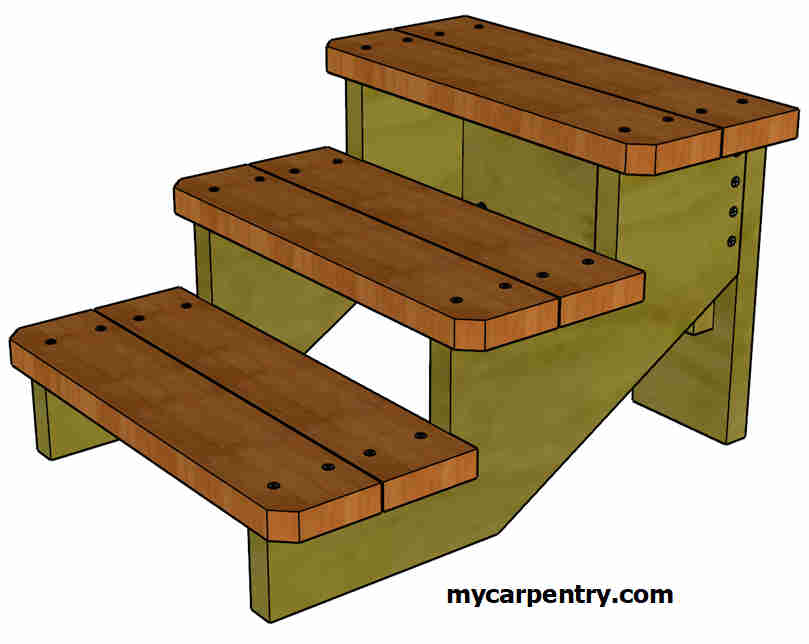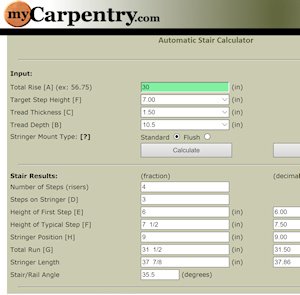Stairs and Landings
Our stairs and landings section provides quick access to the stair-building resources available on mycarpentry.com. You can access the stair calculator, find information about laying out and cutting stringers, learn how to stairs with landings, build stairs for decks, and design and install stair railing.
Building Stairs - this article focuses on learning the valuable carpentry skills of stair building. You will learn how to manually calculate stair rise and run using basic math, layout stringers with a framing square and a carpenter's pencil, and cut stringers with a circular saw and jig saw.
Building Deck Stairs - learn how to build stairs for a deck. This article covers building codes related to building deck stairs, provides information about concrete footings and landings for deck stairs, the different ways to attach stair stringers to a deck frame, how to frame landings for a run of stairs, and the materials used for building deck stairs.
Stair Railing - learn how to determine the dimensions and angles of the stair rail elements, install the upper and lower posts, and layout balusters. This tutorial discusses the international building codes related to stair railing: post height, rail height, baluster spacing, rail cap, and fasteners used in deck stair rail construction.
Stairs with Landings - learn how to build stairs with landings and how international building code applies to a simple mid-level landing or a series of landings that break up a long run of stairs. You will learn how to calculate landing height and methods for designing and constructing multiple platforms (landings) along a long run of stairs.
Custom Stairs - describes how to design and build a set of free-standing custom stairs for an RV using mycarpentry.com's Stair Calculator and Sketchup Pro.
Stair Calculator - the stair stringer calculator comes in two forms: the automatic stair calculator, for calculating rise and run on straight-forward stair designs, and the manual stair calculator (designed to be flexible), for calculating stairs with non-standard rise and run. There are Imperial and Metric versions for both calculators.
Stairs and Landings
There are lots of scenarios when designing and building stairs and landings. Landings can be just about any size, so long as they meet minimum building code requirements. Depending on the type of usage, whether residential or commercial, you must comply with local and international building codes. That is if you intend to request a highly recommended building permit for your project. If there is any particular information you would like to see added to this page, please don't hesitate to contact us.
** Note: For building code information related to stair construction, visit 2024 International Residential Code for One- and Two-Family Dwellings - Section 318 - MEANS OF EGRESS.
Framing Carpentry - Learn about framing, walls, roofs, doors, floors, and ceilings.
Carpentry Tools - Learn about the tools used in carpentry.
DIY Projects - Read about the DIY projects available on mycarpentry.com.
What next?
Leave Stairs and Landings and visit the mycarpentry.com home page.


